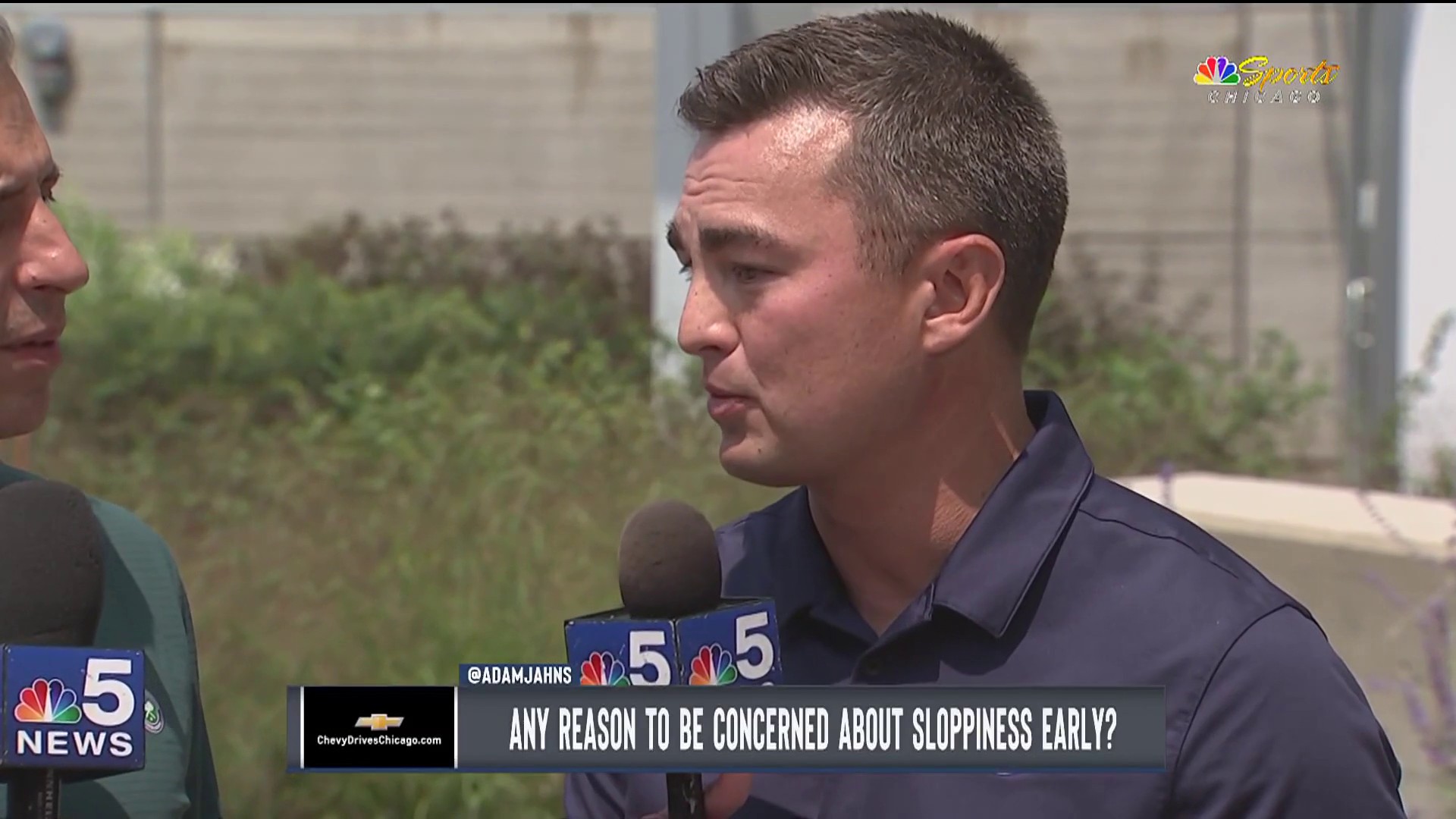LAKE FOREST, Ill. – Football is a game of adjustments. Players come in and make a splash. Coaches watch tape then change their game plans. It happens year-to-year, week-to-week, sometimes even quarter-to-quarter. And it will be no different for new Bears quarterback Caleb Williams.
In fact, Williams already went through the process a bit during his time at USC. Lincoln Riley, Williams’ coach at both SC and Oklahoma, explained how defenses changed things up over the course of his three seasons in college.
“People tried a little bit of everything when you look through it all,” Riley said. “I think people were a little scared to play man coverage with him just because he can win with his arm and then obviously you start turning heads the other way and when he takes off he is certainly a real weapon there. I think we probably saw more zone coverage throughout the years because of that.”
Stay in the game with the latest updates on your beloved Chicago sports teams! Sign up here for our All Access Daily newsletter.
Something similar happened with Justin Fields over his three years in Chicago. When it became clear that Fields had developed into one of the most dangerous rushing quarterbacks, opposing defenses started playing more zone, kept a spy on Fields more often and began crashing the mesh point on run-pass option concepts. Defenses wanted to not only limit the explosive runs, but also force Fields to throw the ball. He and the rest of the Bears offense struggled to come up with a response that worked consistently well.
Over the course of Williams’ final season at SC, the No. 1 point of emphasis from opponent to opponent seemed to be to keep Williams in the pocket at all costs. At the NFL Combine, many defensive players who played against the Trojans mentioned that key at the top of their list.
“He’s one of those quarterbacks that we’re out there praying for– just seeing him out there running around and throwing the ball, it’s like ‘Sheesh, this guy’s good,’” said third-round pick Bralen Trice, who took on Williams with the Washington Huskies last year.
Williams racked up over 300 passing yards and scored four touchdowns against the Huskies defense, but they managed to contain him and the Trojan offense just enough to win 52-42. Everybody knew the Trojan defense was terrible last year. Trice said the key was going back to basics to prevent one of Williams’ numerous five or six touchdown performances.
NFL
“It starts with the contain, right? You go back to your fundamentals as an edge. Contain the quarterback, keep him in the pocket, don’t let him get outside of you.”
The team that really gave Williams the most trouble was the Fighting Irish in 2023. They limited Williams to 199 yards and one touchdown, while intercepting him three times. That marked just the second time in Williams’ college career that he threw multiple interceptions in a game. The key for the Irish was learning from their past mistakes.
“The thing that was so dangerous about him was his ability to extend plays,” said linebacker JD Bertrand, who was selected by the Falcons in the fifth round of this year’s draft. “Two years ago we could see that. He would turn a four-second play into an eight-second play. We were hurting our secondary trying to make them cover for so long.”
Like most other teams, the Irish plan started by containing Williams with a “true cage rush,” but went beyond that. They didn’t want Williams to beat them with his arm or his legs, so they practically invited the Trojans to run the ball by putting fewer players in the box and packing their pass coverage. Then, they made sure to stay disciplined in their lanes to avoid getting gashed by the USC running backs.
When Williams escaped their contain– because Williams escaping contain at some points was inevitable– they tried to flush him away from his throwing hand. They made sure to keep a spy player on him to limit the damage, too. Finally, the Fighting Irish tried to keep Williams guessing as much as possible with pre-snap disguises.
“We know that a lot of the sideline checks would come in and he would scan the sideline, then communicate. So for us we tried to hold the disguise as long as possible.”
The plan worked for Notre Dame, and the basic tenets could apply in the NFL. But in a league where play calls don’t come in from the sideline, opposing defensive coordinators will have to come up with other creative ways to make him uncomfortable.
Riley hinted that Williams’ adjustment to the defensive adjustments took some time, but he did noticeably improve. As the years went on, if a defense forced Williams to beat them from the pocket, “he was able to do that a majority of the time.”
A big reason Williams was able to do that is because of his excellent pocket presence and awareness. The way Williams feels incoming pressure and nimbly navigates around it is like a sixth sense. Just like anything, Riley said Williams improved at picking up disguised and rotating coverages as he got more reps against those strategies.
“He certainly has the physical skills to beat anything,” Riley said. “He’s just getting ready to see it with better players. It’ll be a great challenge for him but it’s one I know he’ll certainly look to embrace.”


